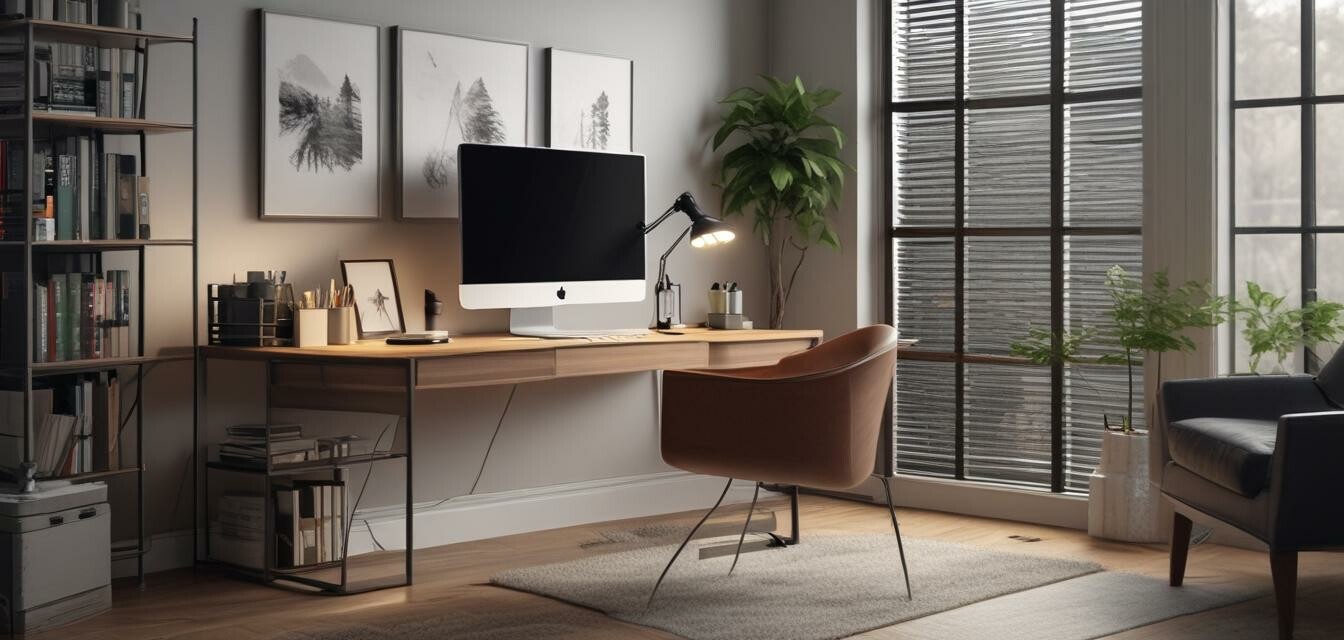
The Rise of Hybrid Workspaces in Home Office Design
Key Takeaways
- Hybrid workspaces balance comfort and professionalism, reflecting the evolution of working habits.
- Design elements must accommodate both remote work and occasional in-office visits.
- Investing in ergonomic furniture is essential for long-term health and productivity.
- Technology integration plays a crucial role in enhancing hybrid workspace efficiency.
- Flexible designs increase adaptability to changing work environments.
As the concept of work continues to evolve, the design of home office spaces is also transforming. With more individuals embracing a hybrid workspace model that blends remote and in-office work, it’s essential to consider how to create an environment that’s both productive and comfortable. In this article, we will explore the trends in hybrid workspaces and what to consider when designing your home office.
Understanding hybrid workspaces
A hybrid workspace allows for a flexible work environment where employees can transition seamlessly between their homes and traditional offices. This flexibility supports work-life balance while addressing the diverse needs of the workforce.
Why hybrid workspaces are gaining popularity
- Flexibility: Employees appreciate the option to work where they feel most productive.
- Cost savings: Reducing the time spent commuting can lead to financial savings and increased job satisfaction.
- Tailored environments: Home offices can be customized based on individual preferences.
Key elements of a hybrid workspace
Designing an effective hybrid workspace involves thoughtful consideration of various elements:
| Element | Description |
|---|---|
| Furniture | Investing in ergonomic chairs and desks that support long hours of work. |
| Lighting | Utilizing both natural and artificial lighting to enhance mood and productivity. |
| Technology | Ensuring your workspace is equipped with reliable devices and high-speed internet. |
| Organization | Implementing effective storage solutions to keep your desk clutter-free. |
Trends shaping hybrid workspaces
Let's take a closer look at some of the trends that are shaping hybrid workspaces:
1. Multifunctional furniture
As space becomes a premium in home offices, multifunctional furniture items like desk converters, foldable desks, and sleeper sofas are gaining traction. These make the office adaptable, allowing users to switch between tasks and work styles seamlessly.
2. Biophilic design
The incorporation of natural elements—such as plants, natural light, and organic materials—creates a calming atmosphere, fostering creativity and reducing stress.
3. Technology integration
Smart devices facilitate efficient hybrid work setups. This includes smart speakers, adjustable desk heights, and collaborative tools that bridge the gap between remote and in-office productivity.
4. Personalization
Employees are increasingly looking to infuse their personalities into their home office designs. Customizable décor that reflects personal interests can enhance motivation and satisfaction.
5. Wellness focus
Designing workspaces with a focus on wellness is vital. This includes options for standing desks, yoga corners, or breakout spaces for relaxation during work hours.
Tips for creating your hybrid workspace
Beginner’s Section
- Choose an ergonomic chair to support your back during long hours of sitting.
- Incorporate adequate storage solutions to keep essential supplies at hand while minimizing clutter.
- Position your desk near a window to leverage natural light.
- Create a dedicated workspace that minimizes distractions and promotes focus.
- Incorporate personal items that inspire you and create a positive workspace vibe.
Conclusion
With the rise of hybrid workspaces, designing a home office that caters to a balance of comfort and functionality is essential. By considering modern trends and effective design elements, you can create a conducive work environment that enhances productivity and personal satisfaction.
Pros
- Enhanced flexibility for employees.
- Cost-effective solutions for companies and employees.
- Improved work-life balance and job satisfaction.
Cons
- Potential for isolation when working remotely.
- Difficulties in maintaining team cohesion and communication.
- Challenges related to setting up a functional workspace at home.
For more tips on setting up your ideal workspace, check out our section on buying guides, where we cover essential furniture and accessories for the home office.
Stay connected to our news and trends category to keep up with the latest updates in home office furniture designs!